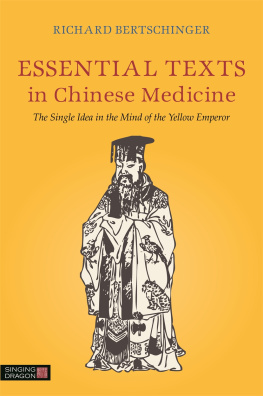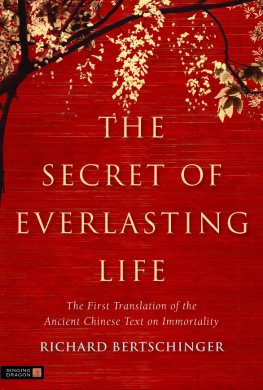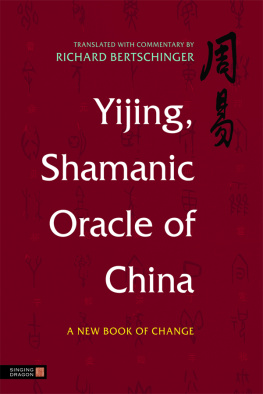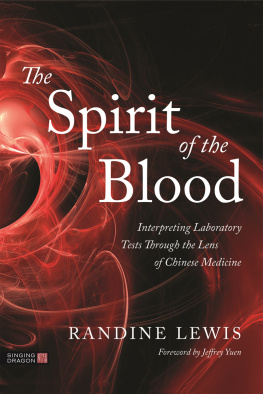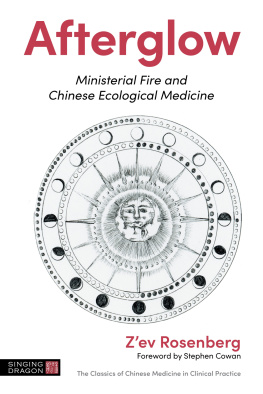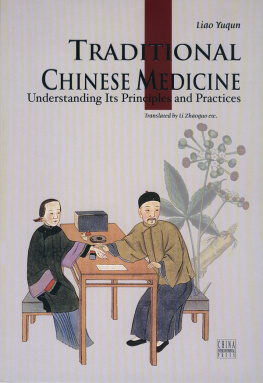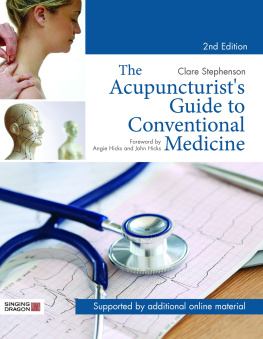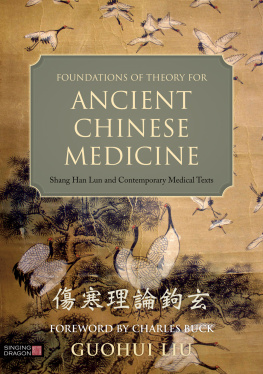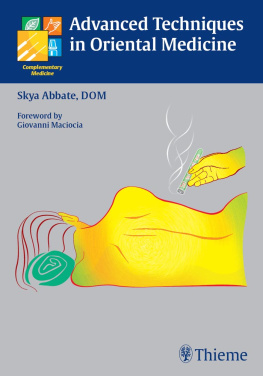
Essential Texts in Chinese Medicine
by the same author
The Great Intent
Acupuncture Odes, Songs and Rhymes
Richard Bertschinger
ISBN 978 1 84819 132 7
eISBN 978 0 85701 111 4
Everyday Qigong Practice
Richard Bertschinger
ISBN 978 1 84819 117 4
eISBN 978 0 85701 097 1
Yijing, Shamanic Oracle of China
A New Book of Change
Translated by Richard Bertschinger
ISBN 978 1 84819 083 2
eISBN 978 0 85701 066 7
The Secret of Everlasting Life
The First Translation of the Ancient Chinese Text on Immortality
Richard Bertschinger
ISBN 978 1 84819 048 1
eISBN 978 0 85701 054 4
RICHARD BERTSCHINGER
ESSENTIAL TEXTS
in Chinese Medicine
The Single Idea in the Mind of the Yellow Emperor
FOREWORD BY ALLEN PARROTT

LONDON AND PHILADELPHIA
First published in 2015
by Singing Dragon
an imprint of Jessica Kingsley Publishers
73 Collier Street
London N1 9BE, UK
and
400 Market Street, Suite 400
Philadelphia, PA 19106, USA
www.singingdragon.com
Copyright Richard Bertschinger 2015
Foreword copyright Allen Parrott 2015
All rights reserved. No part of this publication may be reproduced in any material form (including photocopying or storing it in any medium by electronic means and whether or not transiently or incidentally to some other use of this publication) without the written permission of the copyright owner except in accordance with the provisions of the Copyright, Designs and Patents Act 1988 or under the terms of a licence issued by the Copyright Licensing Agency Ltd, Saffron House, 610 Kirby Street, London EC1N 8TS. Applications for the copyright owners written permission to reproduce any part of this publication should be addressed to the publisher.
Warning: The doing of an unauthorised act in relation to a copyright work may result in both a civil claim for damages and criminal prosecution.
Library of Congress Cataloging in Publication Data
Bertschinger, Richard, author.
Essential texts in Chinese medicine : the single idea in the mind of the Yellow Emperor / Richard Bertschinger.
p. ; cm.
Translation of and commentary on the Nei jing zhi yao of Ming doctor and scholar Li Zhongzi, alongside the original Chinese, with a number of additional texts from the Huang di nei jing.
Includes bibliographical references.
ISBN 978-1-84819-162-4 (alk. paper)
I. Li, Zhongzi, 1588-1655. Nei jing zhi yao. II. Li, Zhongzi, 1588-1655. Nei jing zhi yao. English III. Huangdi nei jing. Selections. IV. Huangdi nei jing. English Selections. V. Title.
[DNLM: 1. Huangdi nei jing. 2. Medicine, Chinese Traditional--history. 3. Medicine, Chinese
Traditional--methods. 4. Manuscripts, Medical--history. WZ 294]
R127. 1
610. 951--dc23
2014021760
British Library Cataloguing in Publication Data
A CIP catalogue record for this book is available from the British Library
ISBN 978 1 84819 162 4
eISBN 978 0 85701 135 0
At the stillpoint of the turning world
Gia-fu Feng
The Tao gave birth to One,
One gives birth to two,
Two gives birth to three,
Three gives birth to the ten thousand things.
The ten thousand things all bear Yin on their backs
And embrace the Yang,
Infused with a single breath they form an easy harmony.
Laozi , Chapter 42
CONTENTS
List of Tables
Foreword
Richard Bertschingers work on these important Chinese texts deserves to become an essential text for medicine in the 21st century. His book has achieved a rare three-way combination: scholarly for academics, accessible for students, and relevant to practitioners. The entire acupuncture community will be grateful for his labours.
But I also believe his mention of Mencius and Confucian thought has lessons for a very different readership. It is more than two millennia since Hippocrates urged doctors to consider the person as a whole, but this wisdom seems to have been lost in modern medicine or at least temporarily mislaid. Parts of this book should be required reading for the entire body of Western practitioners, because it re-states key human values and consequent approaches to medical practice that are genuinely complementary and beneficial to scientific biomedicine.
Through personal experience, I have long believed that traditional acupuncture has much that can actually enhance and improve Western medical practice. Richard Bertschingers book illustrates conclusively that it has much more to offer than treatment for pain and muscular-skeletal conditions. It articulates some of the ancient wisdom on medical ethics, patient care and practitioner development rightness in action Mencius called it still needed by healthcare professionals in the 21st century, and which could usefully be the basis of much continuing professional development.
The book also provides practitioners with a very useful set of deep metaphors, taken from nature, society, and life as it is lived. It does not start with the human body as a kind of machine or complex set of mechanisms, chemical elements or physical forces only properly known in the ivory tower of the scientific laboratory. It offers a better approach, therefore, to the messy, real life of medicine where mind and body are inseparable and when the machine metaphor breaks down and fails to deliver. Rightness in action, indeed.
Now that China is set to overtake the USA as the worlds largest economic power, is it so strange to take a lesson from their traditions? Richard Bertschingers book would be a good place for Western doctors to start this serious learning process.
Allen Parrott
Formerly, Lead Accreditation Officer,
British Acupuncture Accreditation Board
A NOTE ON THE TEXT
A differing world-view, a different sensibility in medicine; that is what is presented in these texts. Yet when I first read Li Zhongzis Cornerstone to the Neijing (1642) in the summer of 1986, I felt no difference between us, no difficulty in understanding what he was saying. It was as if I had found a friend at my elbow, a trusted guide and mentor by my side. For publication I have abridged his work slightly, notably in the pathology section (Chapter IX), to keep it relevant and accessible to modern practitioners. I have also added a little to the choice of texts; some on acupuncture, on the spirit in needling and diagnosis, on place, and on Five Element typology. I have also leaned heavily on modern Chinese editions of the Huangdi Neijing , as well on the Japanese commentaries of the Tamba family (see Select Bibliography and Sources), and the exacting inspiration of Gia-fu Feng (19191985). The enticing animal designs that accompany each translation come from a silk-embroidered altar-cloth found in a Warring States (c. 300 BCE ) tomb from Hubei Province, contemporary with the Huangdi Neijing . I have also gained support from many, to whom my grateful thanks: Derek Woodward, Professor Man Fong Mei (Benny Mai), Alan Hext, Sara Hicks, Professor Elisabeth Hsu, Dr Tim Gordon, Dr Allen Parrott, Dr Jidong Wu, Russell Chapman, Jane Robinson, Lesley Jenkins, Dr Barry Nicholls, Trish Robinson, Paul Hougham, Dr Charlotte Paterson none of whom, of course, should be held responsible for my faults and errors, which are entirely of my own making.
Introduction
The aim of these texts is to provide an accessible view of the fundamental writings of classical Chinese medicine and to give an indication of that peculiar fusion of medical thought and noted sensibility, which is so Chinese. I have used exclusively the Huangdi Neijing or Yellow Emperors Medical Classic (texts mostly assembled c. 200 BCE 200 CE ) the well-spring of Chinese medicine for two thousand years. As a result of pondering these texts and ideas in my own practice, I have come to a clearer knowledge of the immediacy and joy of this wonderful medicine. People get well quicker and that is everything we want. And, in addition, I have begun to understand the simplicity and subtlety residing in Chinese thinking. But more about that later.
Next page
